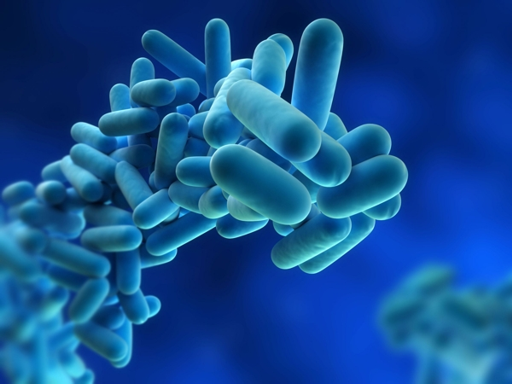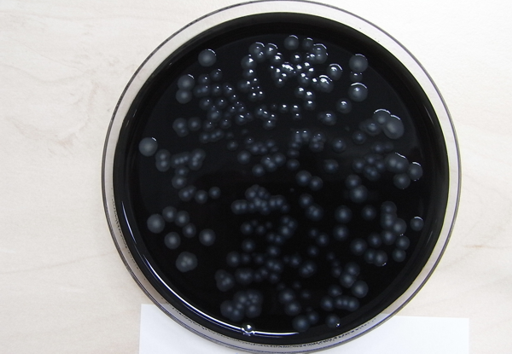Since 2003 the (German) Drinking Water Directive stipulates that central hot water systems have to be tested for the microbiological parameter Legionella spec. No more than 100 colony-forming units (100 CFU) of those bacteria should be present in 100 ml of drinking water; otherwise further (technical) measures to reduce the contamination are mandatory. But what exactly are Legionella?
 Legionella can cause severe pulmonary infections and mild Pontiac fever
Legionella can cause severe pulmonary infections and mild Pontiac fever
Legionella can cause severe pulmonary infections and mild Pontiac fever Legionellae can cause severe pneumonia with considerable mortality risk. The bacterium Legionella, which lives in the water, can cause the so-called Legionnaires’ Disease in humans – named after a major outbreak of disease among American legionaries during a veteran meeting (American Legion) in Philadelphia in 1976. It is a severe form of lung inflammation (legionella pneumonia), which is fatal in about 10-15% of cases. In addition to this severe form of disease, there are also slight tracts which appear as flu-like infections (Pontiac fever) and are characterized by fever, cough, and muscle pain.
Legionella are present everywhere in the environment
Legionellae are environmental germs, which multiply in amoebae and other single cells. At present, 51 species with a total of 73 serogroups are known, with Legionella pneumophila serogroup 1 being the most important for diseases in humans. Legionellae are spread practically everywhere, especially in fresh water, they grow best, however, at temperatures between 20° and 45°C. Legionella is widely common as a typical environmental germ. Legionella can form at interfaces, particularly at those between water and solid surfaces, but have also been found on oil–water interfaces and, as a rule, there is no hygiene hazard.
Legionella grow best between 25 and 45 ° C
However, if the germs reach man-made hot water pipelines, they find ideal conditions for their propagation at temperatures between 25 ° C and 45 ° C. In particular, large hot water systems with extensive pipelines, such as those found in hotels, hospitals or other comparable facilities, are prone to contamination. This applies in particular to older and poorly maintained line systems. Here, biofilms and deposits in the piping systems provide optimal living conditions for them. They are more likely to form where there are areas of low water flow and where water is allowed to stagnate. In general, all water-bearing systems containing hot water (25 ° C-45 ° C) can be contaminated with legionella.
 Compliance with technical regulations for drinking water hygiene reduces health risks
Compliance with technical regulations for drinking water hygiene reduces health risks
Observance of the applicable technical regulations for drinking water heating and control systems can, however, largely minimize the risk of contamination. According to the Drinking Water Ordinance, microbiological drinking water tests are to be carried out in buildings in which heated drinking water is released to the public. Legionella growth is inhibited at water temperatures above 55 ° C. From 60 ° C the germs are destroyed. Legionellae can also occur in cold water but do not increase appreciably at temperatures below 20 ° C. Due to their parasitic lifestyle within protozoa, however, the intracellular legionella are quite well protected against disinfection and other unfavorable environmental influences. Therefore, not only the detection of legionella itself, but also its host organisms are important for a risk assessment in water piping systems.
Respiratory contagion, not transmitted person to person
Infection is usually caused by the inhalation of legionella-containing water in the form of an aerosol (fine water vapor or mist), but also the aspiration of contaminated water can lead to infection. The primary sources of infection are piping systems for hot water distribution (sanitary installations), whirlpools, swimming pools, cooling towers and cooling systems for ventilation systems. Rarely, inhalers and dental units can also be a possible cause of infection. The decisive factors here are the temperature of the water and its residence time in the system, which influence the proliferation of legionella, as well as the formation of aerosols, which promotes spreading and infection. A direct transmission from person to person has not been observed so far. Infection sources can exist both in the home and in the workplace. However, diseases can also be acquired during a hospital stay (nosocomial infection) as well as associated with a trip and the related stays in hotels or other accommodation.
Measured by the spread of the germs, human diseases are comparatively rare. In addition to the bacterial load of the water, the nature of the exposure and the virulence of the strain, the pathogenic effect also depends decisively on the natural defenses and existing pre-existing diseases of the affected persons In general, people with a weakened immune system are exposed to a higher risk of disease. These include, in particular, elderly people who are often suffering from pre-existing conditions or specific basic disorders, such as diabetes. Other risk groups are persons who are under immunosuppressed therapy (eg due to an organ transplantation) or suffer from chronic pulmonary disease as well as patients with tumor diseases. In addition, tobacco and alcohol increase risk of disease. Disorders occur almost exclusively by adults, with men being affected much more frequently than women.


